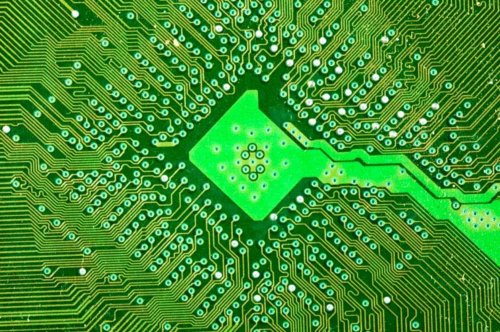By Howard Goff, NCAB Group UK.
Dataweek
So… why are they green? I did not know, so I resorted to google. My favourite answer was “for the same reason that jeans are blue and NY taxi cabs are yellow”. Which, actually, is not strictly true.
It seems there are numerous theories on why a PCB is normally green, ranging from the USA Army deciding that it would be their standard, which then became a global norm, through to green being easy on the eye for colour contrast during assembly, through to green being environmentally friendly (hardly a deciding factor 100+ years ago?)

The earliest PCBs date back to the early 1900s, but only really became recognisable to the products manufactured today, when used in early gramophone and valve radio designs of the 1920s. By the ‘50s and ‘60s, laminates using different types of resins mixed together were being used, particularly by the defence agencies for new weapons and communications systems.
It was at that time that the solder masks being used generally used a base resin that was a brownish yellow and a hardener that was a deeper muddy brown. When they were mixed together, they created a honey brown colour that was not particularly attractive. They tried adding red pigments which then turned this to a rusty colour and then, using a blue pigment, simply made this darker brown.
None of these experiments resulted in very appealing colours. Since the base laminate by that time had a green hue, they tried adding yellow and blue pigments and ended up with an acceptable green, which then became the standard that we see today. So, it seems, this is the most logical reason why PCBs are green, and perhaps you will also conclude, a little bit of a dull reason.